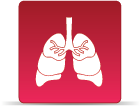Hydrazine/Hydrazine sulfate
CASRN 302-01-2 | DTXSID3020702
- IRIS Summary (PDF) (14 pp, 119 K)
Noncancer Assessment
Reference Dose for Oral Exposure (RfD) (PDF) (14 pp, 119 K)
Not assessed under the IRIS Program.
Reference Concentration for Inhalation Exposure (RfC) (PDF) (14 pp, 119 K)
Not assessed under the IRIS Program.
Cancer Assessment
Weight of Evidence for Cancer (PDF) (14 pp, 119 K)
Last Updated: 09/07/1988
| WOE Characterization | Framework for WOE Characterization |
|---|---|
| B2 (Probable human carcinogen - based on sufficient evidence of carcinogenicity in animals) | Guidelines for Carcinogen Risk Assessment (U.S. EPA, 1986) |
- Tumors have been induced in mice, rats and hamsters following oral, inhalation or intraperitoneal administration of hydrazine and sulfate. Hydrazine is mutagenic in numerous assays.
- This may be a synopsis of the full weight-of-evidence narrative.
Quantitative Estimate of Carcinogenic Risk from Oral Exposure (PDF) (14 pp, 119 K)
Oral Slope Factor:
3.0 per mg/kg-day
Drinking Water Unit Risk:
8.5 x 10 -5 per µg/L
Extrapolation Method:
Linearized multistage procedure, extra risk
Tumor site(s): Hepatic
Tumor type(s): Hepatoma (Biancifiori, 1970)
Quantitative Estimate of Carcinogenic Risk from Inhalation Exposure (PDF) (14 pp, 119 K)
Inhalation Unit Risk:
4.9 x 10 -3 per µg/m3
Extrapolation Method:
Linearized multistage procedure, extra risk
Tumor site(s): Respiratory
Tumor type(s): Nasal cavity adenoma or adenocarcinoma (MacEwen et al., 1981)
- Human Health Benchmarks for Pesticides (HHBP). This database provides human health benchmarks for pesticides that may be present in drinking water.
- Office of Pesticide Programs Pesticide Chemical Search. This database provides links to health effects information and registration status for pesticides.
- Chemistry Dashboard. This database provides information on chemical structures, experimental and predicted physicochemical, and toxicity data.
You will need Adobe Reader to view some of the files on this page. See EPA’s PDF page to learn more.



